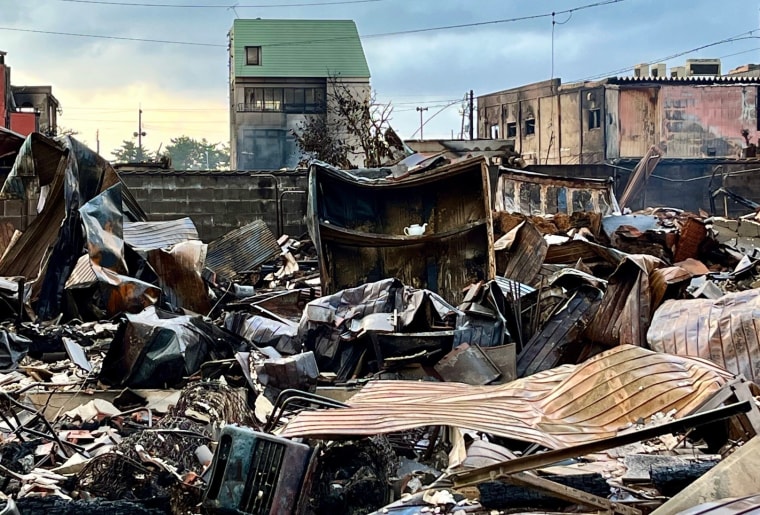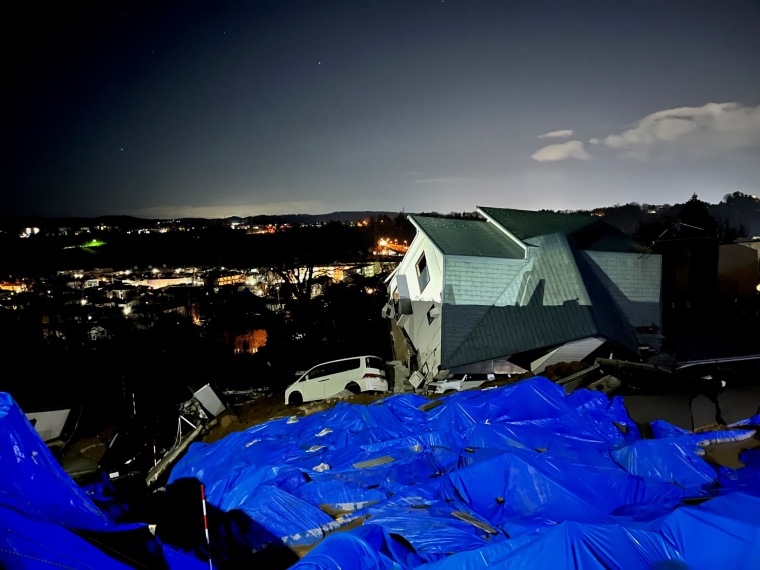Travelling through the mountains and along the coast, one cannot help but be overwhelmed by the scale of the destruction caused by the earthquake in Japan. Every village, damaged and empty, tells a story of tragedy and loss. The tsunami warning forced people to evacuate, and many have yet to return. Officials are urging caution and advising residents to stay away from their homes due to the high risk of another powerful earthquake.
In Kuroshima, a historic site on the outskirts of Wajima, the old temples and traditional wooden buildings, which had withstood previous earthquakes, now lay in ruins. The impact of this earthquake was different, leaving behind a deep sense of loss. The majority of residents in these communities are elderly, lacking the resources, energy, and time to rebuild.
Looking out towards the sea, the altered landscape is evident. Experts report that the tectonic shifts from the quake raised the ground by 13 feet in some areas and shifted it sideways by more than 3 feet. The ocean floor has also been permanently transformed. In Kuroshima, a breakwall reveals water on only one side, and the local port has shifted, making it too shallow for fishermen. A new beach now stretches where none existed before.

Caption: Some 200 shops and buildings made of wood and traditional materials were ravaged by fire in Wajima’s central market. (Photo: Janis Mackey Frayer)

Caption: In Ishikawa Prefecture, blue tarps mark where the road used to be. A landslide toppled houses and upturned cars. (Photo: Janis Mackey Frayer)
Wajima, located just 20 miles from the epicenter, feels the full impact of the earthquake. The death toll has reached 126, with over 200 people still unaccounted for or trapped under debris. Despite the passing of the critical 72-hour window to rescue survivors, rescue crews, urged by Japan’s prime minister, Fumio Kishida, continue their efforts. A recent success story involved pulling an 87-year-old woman from the collapsed first floor of her house after being trapped for days. Aftershocks, cold weather, and rain add further complications to the recovery operation.
Across the affected areas, thousands of military and police personnel, along with search and rescue dogs and helicopters, tirelessly work to locate survivors and recover bodies. In Wajima, crews meticulously search every damaged house, their yellow and blue uniforms a symbol of hope. Despite their best efforts, some sites yield no survivors, and the search moves on.

Caption: In Wajima, search and rescue crews went door-to-door checking damaged houses for survivors or bodies. (Photo: Janis Mackey Frayer)
The need for aid is enormous, with over 10,000 people in Wajima alone seeking refuge in evacuation centers. Supplies are slowly trickling in, and volunteers are doing their best to provide meals, coffee, and support for those in need. Wandering through the market area, where burned-out cars and fallen power lines lay strewn, the extent of the devastation becomes clearer. Despite its preparedness for earthquakes, Japan faces a long and challenging road to recovery in this region. Buildings lie in ruins, and the intersection in Wajima bears witness to the tragedy as a seven-floor building stands on its side, its balconies still intact, and the traffic light pinned underneath, persistently working.
To read more about the devastation caused by the earthquake in Japan, visit F5mag.com.
Source link: Source link
